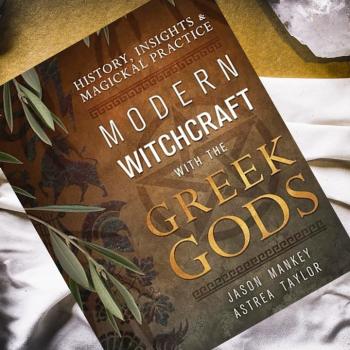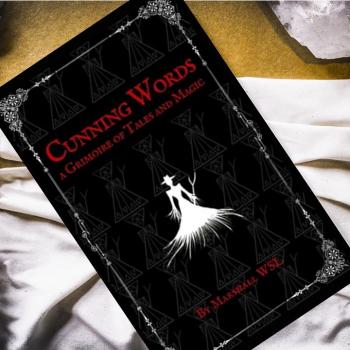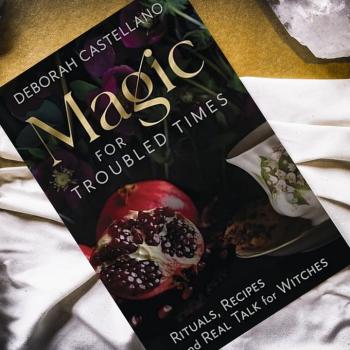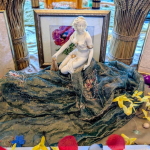What can a naturalist celebrate in June?
This post is part of Naturalistic Traditions, a column exploring naturalism in Pagan ways. This column will cover seasonal celebrations, historical and contemporary movements, and ritual practices.
Natural cycles
June 20th is a solstice. Those in the Northern Hemisphere will experience the longest day of the year, with the sun at the highest position in the sky. Meanwhile, those in the Southern Hemisphere will experience the shortest day, and the lowest sun.
The word solstice is derived from the Latin sol (sun) and sistere (to stand still), because at the solstices, the Sun stands still in declination; that is, the seasonal movement of the Sun’s path (as seen from Earth) comes to a stop before reversing direction. (Wikipedia)
As for the lunar phases this month, the 4th will see a full moon, with the new moon on the 19th, just a day before the solstice.
Neopagan traditions
The Summer Solstice is known in Contemporary Paganism as Litha or Midsummer, as in Shakespeare’s Midsummer Night’s Dream. Nichols (2009) calls this a time when bonfires are lit, people may leap through the fires, and the young stay up all night. Pagan lore often marks this as the moment the sun god meets his death, though Nichols reserves that event for the coming cross-quarter.
Glenys Livingstone of PaGaian sees this time as the metaphorical moment when:
…the Goddess and God embrace in a love so complete that all dissolves into the single song of ecstasy that moves the worlds. Our bliss, fully matured, given over, feeds the Universe and turns the wheel. We join the Beloved and Lover in the Great Give-Away of our Creativity, our Fullness of Being. (Livingstone, 2008)
To symbolize this, her ritual script sees flowers, fruit, and the like distributed to participants, who then give away this bounty by casting it into the central fire.
Jon Cleland Host of the Naturalistic Paganism yahoo group suggests kayaking local rivers or lakes, hiking in the woods, and holding a ritual in the forest. He also takes this as a time to celebrate marriage, as well as to consume mead:
Mead is often consumed – celebrating the honey of our marriage and the season. Mead is honey wine, and the full moon closest to Litha is traditionally called the mead moon or the honey moon (hence the name “honeymoon” for the vacation after a wedding). (Host, see files section of Naturalistic Paganism yahoo group)
Civic and humanitarian traditions
 June 5th is World Environment Day, a time to stimulate awareness of the environment and enhance political attention and public action. This year’s theme is “Green Economy: Does It Include You?”
June 5th is World Environment Day, a time to stimulate awareness of the environment and enhance political attention and public action. This year’s theme is “Green Economy: Does It Include You?”
From the website:
The UN Environment Programme defines the Green Economy as one that results in improved human well-being and social equity, while significantly reducing environmental risks and ecological scarcities. In its simplest expression, a green economy can be thought of as one which is low carbon, resource efficient and socially inclusive.
Practically speaking, a Green Economy is one whose growth in income and employment is driven by public and private investments that reduce carbon emissions and pollution, enhance energy and resource efficiency, and prevent the loss of biodiversity and ecosystem services. These investments need to be catalyzed and supported by targeted public expenditure, policy reforms and regulation changes.
But what does all this mean for you? Well, this essentially what the second part of the theme is all about. If the Green Economy is about social equity and inclusiveness then technically it is all about you! The question therefore asks you to find out more about the Green Economy and assess whether, in your country, you are being included in it.
Meanwhile, World Refugee Day is June 20th (same day as the solstice this year). It is devoted to raising awareness of the situations of refugees across the world. This year’s theme is “One refugee without hope is too many.”
About the author
B. T. Newberg has been practicing meditation and ritual from a naturalistic perspective since 2000. After experimenting with Agnosticism, Buddhism, Contemporary Paganism, and Spiritual Humanism, he currently combines the latter two into a dynamic path embracing both science and myth. He is the editor of a community blog for naturalistic spirituality called Humanistic Paganism, which just published an anthology called Year One with over a dozen contributing authors. After growing up in Minnesota, and living in England, Malaysia, and Japan, B. T. Newberg currently resides in South Korea with his wife and cat.
References
Livingstone, G. (2008). PaGaian Cosmology. New York: iUniverse.
Nichols, M. (2009). Candlemas: The light returns. The Witches’ Sabbats.



















